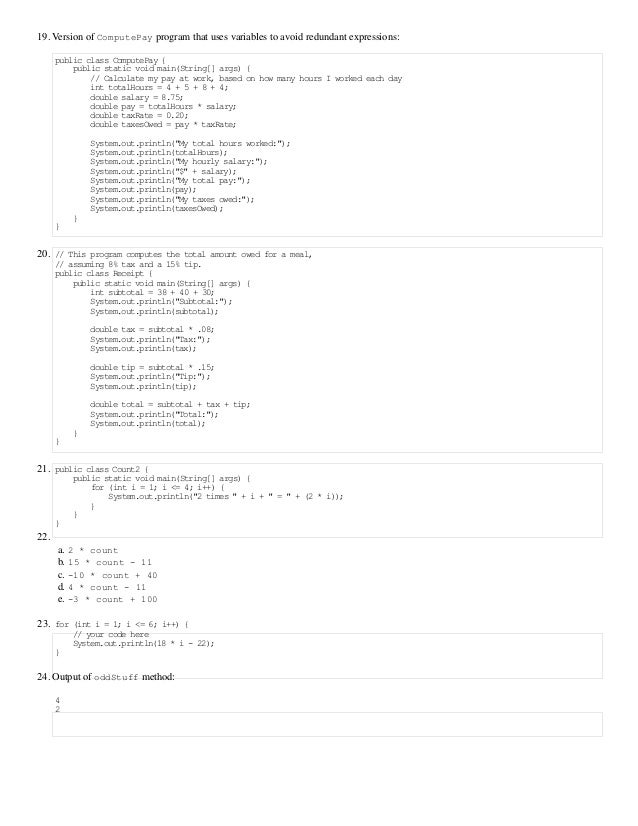BJP4 Exercise 18.15: mergeHeapIntPriorityQueue Building Java Programs, 3rd edition (617) These problems are copyright Pearson Education. Practice-It is not officially associated with this textbook nor with Pearson. BJP3 Chapter 1: Introduction to Java Programming (48) BJP3 Self-Check 1.1: binaryNumbers.
- Supplements, 3rd edition. The following supplements are available to all instructors and students using the textbook. Some of our supplements are password-protected (marked with this padlock icon: ), such as solutions to all end-of-chapter exercises and programming problems, sample homework assignments and their solutions, sample exams, and others.
- Practice-It is an online practice problem tool to help students in college and high school intro programming courses learn and practice basic CS1 and CS2 programming concepts.
- Pro tip: the answers to the exercises can be found on UW's Practice It site. I can't link it here but it's easy to find in a web search. It's a great resource and I highly recommend using it in conjunction with the exercises. This is one of the best print replica textbooks I've seen and is just as usable on a tablet as a print text would be.

Building Java Programs: A Back To Basics Approach, By Stuart ...
Write a method called swapPairs that switches the order of values inan ArrayList of String s in a pairwise fashion. Your method shouldswitch the order of the first two values, then switch the order ofthe next two, then the next two, and so on. If the number of valuesin the list is odd, the method should not move the final element. Forexample, if the list initially stores (“to”, “be”, “or”,“not”, “to”, “be”, “hamlet”), your method shouldchange the list’s contents to (“be”, “to”, “not”, “or”,“be”, “to”, “hamlet”).